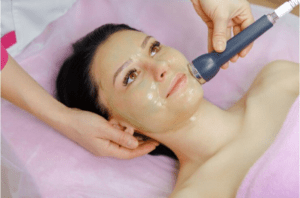In recent years, the field of dermatology has witnessed remarkable advancements in medical-grade chemical peel technology. These innovations have revolutionised the way skin concerns are addressed, offering enhanced outcomes with minimal downtime. This blog post explores the latest developments in formulations, delivery systems, and technologies that contribute to the effectiveness and safety of chemical peel procedures. We will delve into breakthroughs in ingredient research and their impact on achieving optimal results, along with emerging trends that are shaping the future of medical-grade chemical peels.
Advanced Formulations for Skin Peels: Paving the Way for Enhanced Efficacy
The cornerstone of the recent progress in medical-grade chemical peel technology lies in the development of advanced formulations for skin peels. These formulations incorporate a blend of key ingredients that target various skin concerns, ranging from acne lesions and enlarged pores to uneven skin tone and sun damage. The advanced range of formulations aims to provide tailored solutions for different skin types and conditions.
The incorporation of alpha hydroxy acids (AHAs) and beta hydroxy acids (BHAs) in these formulations has been a game-changer. These acids, such as glycolic acid and salicylic acid, play pivotal roles in chemical exfoliation, promoting the shedding of dead skin cells and improving skin texture. The synergy of these ingredients enhances the efficacy of the peeling agents, offering a comprehensive solution for various cutaneous imperfections.
Salicylic Acid: Targeting Acne and More
Salicylic acid, a beta hydroxy acid, takes centre stage in addressing acne lesions and oily skin. Its lipophilic nature allows it to penetrate sebaceous follicles, effectively targeting and treating acne vulgaris. Salicylic acid’s anti-inflammatory properties make it an essential component in formulations designed for active acne management.
Innovative delivery systems now ensure the controlled release of salicylic acid, optimising its therapeutic effects while minimising irritation. This advancement not only enhances the treatment of acne but also extends the applications of salicylic acid to address other skin concerns such as pore size and skin sensitivity.
Lactic Acid: A Versatile Alpha Hydroxy Acid for Diverse Skin Types
Lactic acid, an alpha hydroxy acid derived from sour milk, has gained prominence in medical-grade chemical peels due to its versatility. This gentle exfoliant is suitable for various skin types, making it a key ingredient in formulations catering to a broad spectrum of patients.
Recent studies and randomised controlled trials have highlighted the efficacy of lactic acid in addressing cutaneous imperfections, including hyperpigmentation and uneven skin tone. Its ability to stimulate collagen production contributes to its role in facial skin rejuvenation, offering a non-invasive option for those seeking improved skin texture and tone.
In response to the growing demand for customised peel protocols, skin care professionals are leveraging lactic acid’s compatibility with other acids and ingredients. This trend aligns with the shift towards combination therapies, allowing for tailored solutions that address specific skin concerns while minimising downtime.
Glycolic Acid: Unleashing the Power of Deep Chemical Exfoliation
Glycolic acid, another alpha hydroxy acid derived from citrus fruits, remains a staple in medical-grade chemical peels. Its small molecular size facilitates deep penetration into the epidermal layer, making it effective in addressing a myriad of skin imperfections.
The latest advancements in glycolic acid formulations focus on optimising its delivery to target areas with precision. This ensures that the peeling agent reaches the basal layer, stimulating cell turnover and addressing issues such as deep wrinkles and photoaged skin. The controlled release of glycolic acid minimises the risk of adverse effects, making it suitable for a wider range of skin types.
Skin Tone: A Holistic Approach to Aesthetic Dermatology
Achieving an even skin tone is a common goal in aesthetic dermatology, and advancements in medical-grade chemical peel technology are aligning with this objective. The emphasis is not only on treating specific concerns but also on promoting overall skin health and vibrancy.
The use of lactic acid in peel solutions has proven effective in addressing hyperpigmentation and promoting a more uniform skin tone. This is particularly significant in the treatment of sun-damaged skin, where uneven pigmentation is a prevalent concern. The incorporation of vitamin C, known for its brightening properties, further enhances the impact of chemical peels on skin tone.
Combination Therapies: Synergistic Approaches for Optimal Results
In the ever-evolving landscape of medical-grade chemical peels, combination therapies are gaining popularity. Skincare professionals are strategically combining different acids and ingredients to create synergistic formulations that target multiple skin concerns simultaneously.
A notable example is the combination of salicylic acid and lactic acid in a single peel solution. This blend addresses both acne-related issues and uneven skin tone, providing a comprehensive solution for patients with diverse skin concerns. The customization of peel protocols allows skincare professionals to tailor treatments based on individual needs, marking a paradigm shift in the approach to chemical peeling.
Emerging Trends in Chemical Peel Technology
As the field of medical-grade chemical peels continues to advance, several emerging trends are shaping the future of aesthetic and dermatological practices. These trends reflect a nuanced understanding of skin biology and a commitment to optimising outcomes while prioritising patient safety.

Tailored Peel Protocols for Different Skin Types
One of the noteworthy trends is the move towards personalised and tailored peel protocols based on an individual’s skin type. This approach recognizes the unique characteristics and needs of each patient, ensuring that the chemical peel is not only effective but also well-tolerated.
Skincare professionals are now utilising a comprehensive assessment of skin types to determine the most suitable acids, concentrations, and delivery systems. This shift towards customization enhances the patient experience and fosters better outcomes, setting a new standard for the practice of chemical peeling.
Advancements in Delivery Systems: Precision and Safety
The evolution of delivery systems is a key driver in the advancements of medical-grade chemical peel technology. Innovations in this area focus on enhancing the precision and safety of chemical peel procedures.
Microencapsulation of active ingredients, such as lactic acid and glycolic acid, ensures controlled and gradual release, minimising the risk of adverse reactions. This precision allows for targeted treatment of specific areas, making chemical peels more versatile and suitable for addressing localised concerns.
Deep Chemical Peels with Enhanced Safety Profiles
While deep chemical peels have been traditionally associated with more significant downtime and potential side effects, recent advancements are challenging this perception. The development of deep chemical peels with enhanced safety profiles is expanding the scope of these procedures.
Incorporating ingredients with anti-inflammatory properties, such as kojic acid, in deep chemical peel formulations helps manage post-treatment reactions. This breakthrough allows skin care professionals to achieve profound results in skin resurfacing and the treatment of deep wrinkles with minimised risks and downtime.
Conclusion
The advancements in medical-grade chemical peel technology represent a significant stride towards achieving safer, more effective, and personalised skincare solutions. From advanced formulations that target specific skin concerns to the evolution of delivery systems and the rise of combination therapies, the landscape of chemical peeling is transforming.
The integration of cutting-edge research and technology not only addresses existing challenges but also opens new possibilities for the treatment of various skin imperfections. As the demand for aesthetic dermatology procedures continues to rise, the future of medical-grade chemical peels looks promising, with an emphasis on customization, safety, and holistic skin rejuvenation. Skincare professionals and patients alike can look forward to a future where chemical peels play a central role in achieving optimal skin health and aesthetics.



